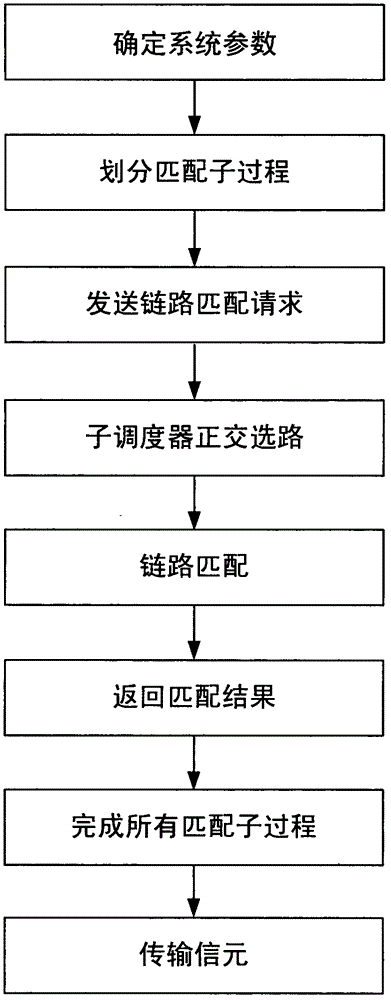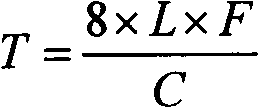Orthogonal multi-sub-scheduling method in Clos switching network based on cell
A technology of switching network and scheduling method, applied in the field of cell-based orthogonal multi-sub-scheduling, which can solve the problems of reduced link utilization rate of switching network, performance impact of switching network delay, and inability to provide services by other cells, etc. Achieve the effect of simplifying work, avoiding complicated work and improving effectiveness
- Summary
- Abstract
- Description
- Claims
- Application Information
AI Technical Summary
Problems solved by technology
Method used
Image
Examples
Embodiment Construction
[0036] Attached below figure 1 The present invention will be further described.
[0037] Step 1: Determine the system parameters in the three-level non-blocking switching network Clos network;
[0038] The first step is to divide the number of external ports of the switching network by the number of input stage units to obtain the number of input stage unit ports. According to the strict and unimpeded condition of the three-level non-blocking switching network Clos network, the value of the formula m≥2n-1 will be satisfied Determine the number of intermediate stage units, where m represents the number of intermediate stage units, n represents the number of input stage unit ports, and the number of output stage units should be equal to the number of input stage units.
[0039] The embodiment of the present invention adopts a 24*24 port switching network with six input stage units, and each input stage unit should have four input ports. According to the strict and unimpeded conditions...
PUM
 Login to View More
Login to View More Abstract
Description
Claims
Application Information
 Login to View More
Login to View More - R&D
- Intellectual Property
- Life Sciences
- Materials
- Tech Scout
- Unparalleled Data Quality
- Higher Quality Content
- 60% Fewer Hallucinations
Browse by: Latest US Patents, China's latest patents, Technical Efficacy Thesaurus, Application Domain, Technology Topic, Popular Technical Reports.
© 2025 PatSnap. All rights reserved.Legal|Privacy policy|Modern Slavery Act Transparency Statement|Sitemap|About US| Contact US: help@patsnap.com



